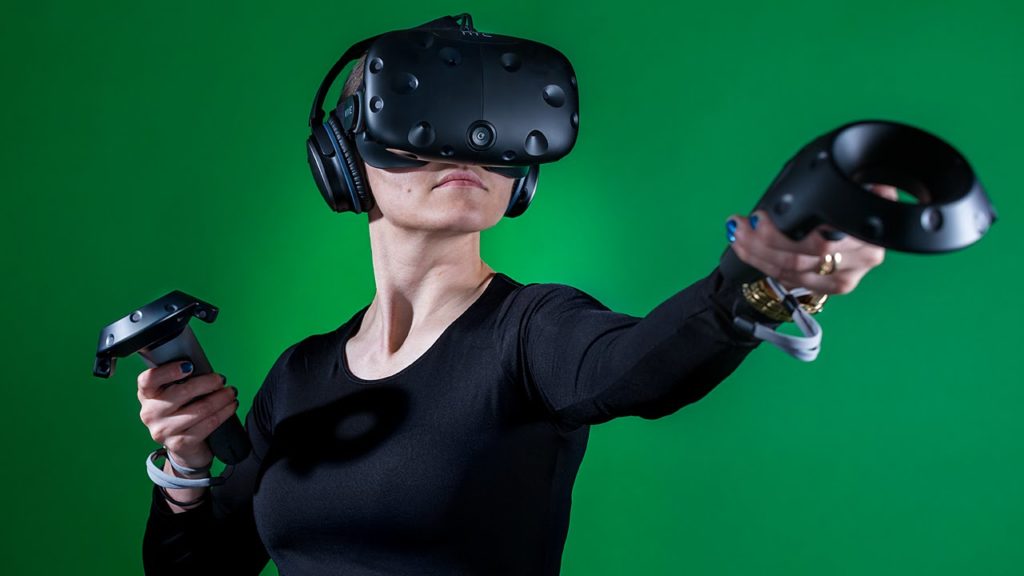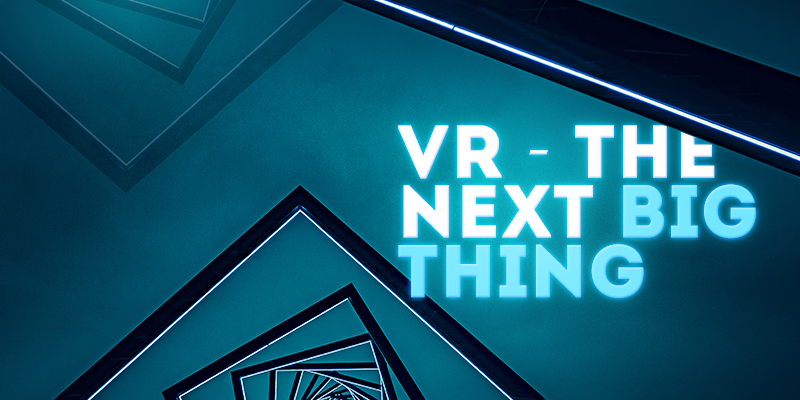It was long considered to be consigned to the realms of science fiction, but today virtual reality (VR) is close to becoming something of an everyday reality. Science fact, if you will.
And some of the biggest tech companies on the planet are formulating their own VR strategies as we stand on the cusp of a consumer-led revolution. Where before you would settle down for a night in front of the TV, or fire up your games console, you may soon opt to pull on a VR headset and escape into a virtual world. There, you’ll be able to explore far-off lands, fight zombies, fly airplanes, or even perform surgery!
The possibilities are endless.
But let’s not get too ahead of ourselves. In this article, we want to answer two very simple questions: what is virtual reality? And how does it work?
Defining Virtual Reality
To arrive at the definition of virtual reality, we must first break it down into its composite parts:
‘Virtual’ and ‘Reality’.
To put it simply, ‘virtual’ is defined as ‘almost as described’ or ‘not physically existing as such but made by software to appear to do so.’ And ‘reality’ is of course the state of things as they actually exist.
So, putting them together gives us a term that means experiencing something that is close to reality: an environment that is created by computer software to appear realistic.

What is Virtual Reality?
Source: Flickr.com, photo by Jonas Tana
Take a moment, lift your head from this article, and look around you. You understand the world through your senses, of which the main ones are sight, sound, smell, touch, and taste. You experience these feelings and sensations via your main sensory organs: your eyes, ears, nose, hands (skin) and mouth.
But you have many more senses than just the five we have rhymed off above. In fact, many neurologists would argue that we have up to 9 senses, while others believe we have over 20. We’re not here to debate the accuracy of this, but there are obvious senses beyond the big five, such as balance and proprioception (the brain’s knowledge of the relative positions of parts of your body).
All of these inputs combine to provide you with a rich understanding of the environment around you. And if you were able to fool your senses into believing that the world around you was real by pulling on a VR headset, then your perception of reality would alter.
The signals being sent back to your brain via your sensory organs would in essence inform your brain that the computer-generated virtual world should be perceived as reality, allowing you to immerse yourself in another world, without leaving the comfort of your own home.
And that, in a nutshell, is virtual reality.
How Does Virtual Reality Work?
Virtual reality is achieved thanks to advancements in computer technology. As it stands, there are a number of available systems and hardware that allow users to experience VR. These include headsets, headphones, omnidirectional treadmills for running and jumping, and specialised gloves that mimic haptic feedback, allowing the wearer to experience touch in a virtual environment.
All of these devices are used to stimulate your senses with the end goal of convincing your brain that the virtual world is indistinguishable from reality. And that’s where it gets tricky.

HTC Vive - how VR works
Source: The Verge
You brain and your senses have evolved to work together in order to provide you with a finely tuned and accurate feedback of your immediate surroundings. If anything is even the slightest bit out of whack, your brain and your senses will pick up on it.
That’s why creating effective and enjoyable VR experiences can be so difficult. In order for the virtual worlds to be convincing enough to fool your senses, the developers must take into account your field of vision, including your peripheral vision. They must also account for your sense of balance, and avoid any lagging as you turn your head to look around your virtual environment. If this isn’t as close to perfect as possible, it can cause motion sickness.
When a VR system manages to bring together the correct balance of software, hardware, and sensory input, you will experience something known as a ‘sense of presence.’ This means you will feel like you are truly present in, and able to interact with, the virtual environment.
Why Do We Need Virtual Reality?
At this point, you might be thinking that this is a lot of effort, and to what end? The truth is, you’re absolutely right. It is a lot of effort. But the value to society could be huge.
And we’re not just talking about the entertainment industry either. While that is clearly where the money will be made (billions of dollars, in fact), thanks to immersive video games and movies, virtual reality has applications that reach far beyond escapism.
For instance, VR will also be used for:
- Medical Diagnoses and Treatment
- Sport Science, Training, and Recovery
- Architecture & Design
Leveraging virtual reality technology will allow for incredibly important breakthroughs in each of these disciplines, impacting many lives in a positive manner in the process.
For example, it’s always better to learn by doing. And when it’s too expensive, impractical, or indeed dangerous to provide someone with first-hand experience of a situation, virtual reality will be key.
From vastly improved flight simulators, to intricate and complicated surgical procedures, highly-skilled professionals will gain vital real-world experience without the real-world risk. And as the cost of VR hardware and software decreases, and its use becomes more mainstream, you will see it enter classrooms and workplaces around the world to improve education and productivity too.
Key Elements of Virtual Reality
All successful virtual reality systems have one thing in common: they all provide a seamless experience. That is to say, when a user turns their head or moves their eyes inside of the virtual world, there is no delay in the appearance and display of the computer-generated imagery.
Everything is life-sized, realistic, and enjoyable, with no lagging or jarring graphics present that might cause motion sickness.
All interaction in the virtual environment should take place in real-time. Even the slightest time delay between the user’s action and the system’s response could shatter the sense of presence created by the virtual world. Once the user becomes aware once more that they are wearing a headset, the experience is ruined.
The key to a strong VR system is the creation of a natural, interactive virtual environment in which a user can enjoy a memorable and immersive experience.
In Summary
Virtual reality, in generating a virtual environment in which users can interact, and which fools our senses into believing what we see, hear, and even touch to be real, will undoubtedly change the way in which we interface with digital information.
Using cutting edge hardware and software, VR will impact a wide range of industries, most notably the entertainment industry. And it will also fundamentally improve the way many high-risk professionals are trained in the future.
Companies such as AppReal-VR will be at the forefront of developing new and innovative VR applications, and as the technology improves and enters the mainstream, we expect to see even more exciting developments.

